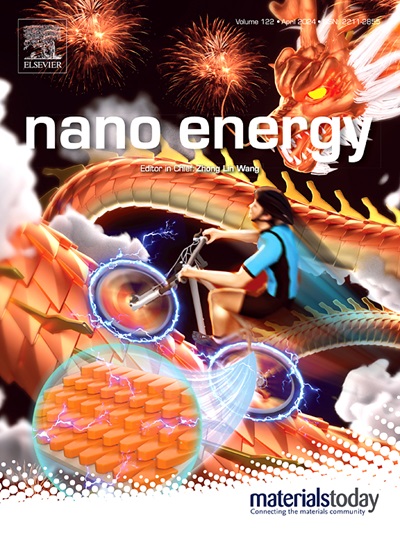Synthesis and Post-Heating Treatment of Inorganic NaF·Na3SbS4 Solid Electrolytes
IF 16.8
1区 材料科学
Q1 CHEMISTRY, PHYSICAL
引用次数: 0
Abstract
Sulfide-type sodium (Na) solid electrolytes (SEs) with halide doping have attracted serious interest due to their high ionic conductivity and great potential in solid-state Na batteries. While other halogens such as Cl, Br, I have been studied to enhance Na-ion transport in sulfide-type SEs, the introduction of fluorine (F) is rarely investigated. Moreover, synthetic parameters such as heating treatment temperatures strongly influence the structure and conductive properties of halide-doped sulfide SEs. Here in, we prepared xNaF·(1-x)Na3SbS4 nanocomposites with varying concentration of F using a low-temperature (150 °C) heating method, and studied the effects of post-heating treatment on structure and conductivity. In situ neutron diffraction was employed to investigate the structural evolution of X-doped Na3SbS4 (X=F, Cl) during the post-heating treatment and cooling process. In addition, the post-heating treatment at 300 °C leads to increased ionic conductivity of xNaF·(1-x)Na3SbS4 nanocomposites with various different F contents. After 300 °C post-heating treatment, 0.2NaF·0.8Na3SbS4 exhibited the highest conductivity of 0.48 mS cm-1 at room temperature. Moreover, improved electrochemical stability was also observed in Na-Sn symmetric cells, specially, with prolonged stable cycling for 300 hours and much lower polarization voltage (<0.35 V). This work highlights the importance of post-heating treatment on the structural evolution and its role in exploring new halide-incorporated sulfide-type SEs, promoting the development of inorganic solid-state ionic conductors.

求助全文
约1分钟内获得全文
求助全文
来源期刊

Nano Energy
CHEMISTRY, PHYSICAL-NANOSCIENCE & NANOTECHNOLOGY
CiteScore
30.30
自引率
7.40%
发文量
1207
审稿时长
23 days
期刊介绍:
Nano Energy is a multidisciplinary, rapid-publication forum of original peer-reviewed contributions on the science and engineering of nanomaterials and nanodevices used in all forms of energy harvesting, conversion, storage, utilization and policy. Through its mixture of articles, reviews, communications, research news, and information on key developments, Nano Energy provides a comprehensive coverage of this exciting and dynamic field which joins nanoscience and nanotechnology with energy science. The journal is relevant to all those who are interested in nanomaterials solutions to the energy problem.
Nano Energy publishes original experimental and theoretical research on all aspects of energy-related research which utilizes nanomaterials and nanotechnology. Manuscripts of four types are considered: review articles which inform readers of the latest research and advances in energy science; rapid communications which feature exciting research breakthroughs in the field; full-length articles which report comprehensive research developments; and news and opinions which comment on topical issues or express views on the developments in related fields.
 求助内容:
求助内容: 应助结果提醒方式:
应助结果提醒方式:


